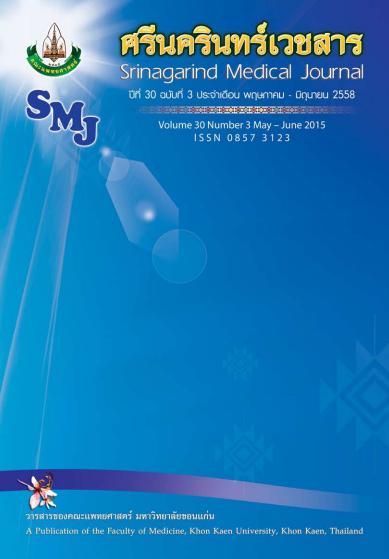Effect of Ethanolic Extract of Carthamus tinctorius on Hemodynamic Changes in L-NAME Hypertensive Rats
Keywords:
Hypertension, L-NAME, Safflower, Carthamus tinctoriusAbstract
Background and Objective: Carthamus tinctorius (CT) or Safflower is extensively used as herb in traditional medicine. It has been reported to have a strong antioxidant capacity. This study aimed to investigate whether CT ethanolic extract could improve hemodynamic alterations in L-NAME induced hypertensive rats.
Methods: Male Sprague-Dawley rats received L-NAME (40 mg/kg/day) in drinking water for five weeks to induce hypertension or vehicle to serve as control. Hypertensive rats were treated with CT ethanolic extract (300 mg/kg/day) or quercetin (25 mg/kg/day) for the last 2 weeks. Systolic blood pressure (SP) was monitored using a tail cuff method once a week. At the end of experimental day, the blood pressure (BP), heart rate (HR), hindlimb blood flow (HBF) and hindlimb vascular resistance (HVR) were measured. Plasma malondialdehyde (MDA) was also measured.
Results: Rats treated with L-NAME for five weeks had high blood pressure (BP), heart rate (HR), high hindlimb vascular resistance (HVR), low hindlimb blood flow (HBF) (p<0.05). MDA level were increased in L-NAME hypertensive rat (p<0.05). Treatment with either CT ethanolic extract or quercetin for the last two weeks significantly reduced BP, HR, HVR, and plasma MDA level.
Conclusions: These results suggest that the CT ethanolic extract can alleviate hemodynamic in L-NAME hypertensive rats. These effects are possibly related to its antioxidant capacity.




